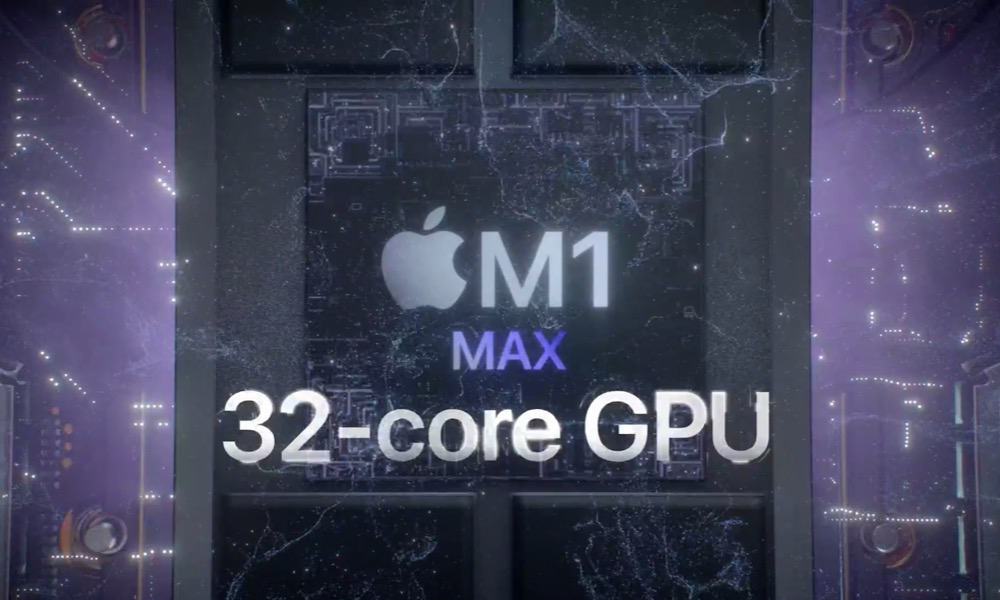Apple Silicon Could Grow to a Mindblowing 40 Cores by 2023
 Credit: Apple / iSpazio
Credit: Apple / iSpazio
Toggle Dark Mode
It shouldn’t come as a big surprise that Apple’s M1 chips are really just the beginning of much bigger things for the Mac lineup, but now a new report gives us a glimpse into just how far Apple plans to take its silicon in the next couple of years.
Over the past year, we’ve already seen Apple unveil an entry-level M1 chip that ran circles around Intel, and then as an encore, it debuted the M1 Pro and M1 Max last month, upping its graphics performance game to heights that we couldn’t have imagined.
After achieving such remarkable feats of engineering, many companies would be content to coast for a while with more iterative improvements, but not Apple. According to The Information, it plans to make its chips even smaller and more power-efficient while delivering performance beyond anybody’s wildest dreams. By the time Intel catches up to the M1, Apple will likely have lapped its latest chips several times over.
40 Compute Cores
Specifically, The Information notes that whatever chip Apple comes out with in 2023 — let’s just call it the “M3” for the sake of discussion — could boast four times as many cores as the current M1 Pro/Max.
We’re talking about 40 computing cores here — a dramatic increase over the eight cores in the M1 and the 10 cores in the M1 Pro/Max.
That’s not even getting into GPU cores, which the report doesn’t even mention. By comparison, Apple’s most powerful Intel-based Mac Pro, maxed out to top specs, “only” includes a 28-core Intel Xeon CPU — and even that’s not really that much faster than the current M1 Max.
So, it’s pretty staggering to imagine what Apple could accomplish with a 40-core CPU — and The Information notes that this chip is still destined for 2023’s high-end MacBook Pro lineup, not just powerful desktop computers like an iMac Pro or Mac Pro.
It appears that the magic behind these more powerful “M3” chips will come thanks to Apple’s cozy relationship with its chip fabricator TSMC. The fabricator is expected to be able to reliably manufacture denser 3nm chips by that time, which will come to both Macs and iPhones.
To put this in perspective, the M1 Max already packs on a mind-boggling 57 billion transistors, and it uses a 5nm process. Meanwhile, Intel’s just-announced 12th-gen “Alder Lake” chips are still lumbering along with a 10nm process, which Apple hasn’t used for any of its chips since the 2018 A11 series found in the iPhone 8 and iPhone X.
To be fair, Intel claims that its 10nm “Enhanced SuperFin” process is equivalent to TSMC’s 7nm, but it remains to be seen how true that will be in practical terms. Regardless, Apple moved to TSMC’s 5nm process with last year’s A14, which already leaves it ahead of Intel’s best efforts, to the tune of 70 million more transistors per square millimeter.
If Apple and TSMC see the same gains from a move to a 3nm process, this could likely result in a 2023 “M3 Max” that would easily break the 100-billion transistor barrier — and likely become the first chip to do so.
As with the current M1 lineup, the 40-core configuration will likely be limited to the higher-end chips. Apple is also said to be planning a standard “M3” for a future MacBook Air. There’s no word on how many cores this would include, but there’s no reason to believe we won’t see significant increases there as well.
That said, Apple doesn’t plan to wait for these more powerful chips before completing its full transition to Apple Silicon. The Information said that there’s already a new Mac Pro in the works that is expected to use a variant of the M1 Max chip with at least two dies, effectively creating a multi-CPU configuration on the same chip to provide more power.
[The information provided in this article has NOT been confirmed by Apple and may be speculation. Provided details may not be factual. Take all rumors, tech or otherwise, with a grain of salt.]







